The common name "Aster" is used to describe hundreds of different plants from Asia, North America, and Europe. And it used to be that North American Asters were lumped in with all of the others as being relatives. But, like any good soap opera, genetic testing has told a very different story. They might look like Asters, and they are still in the Asteraceae family, but now the North American plants are almost all classified in the genus Symphyotrichum. And the only reason I even bring this up is that when you are looking for an Aster for your garden that will thrive year after year and support native pollinators, you really want to look at that Latin name – the pedigree, if you will. You want a Symphyotrichum.
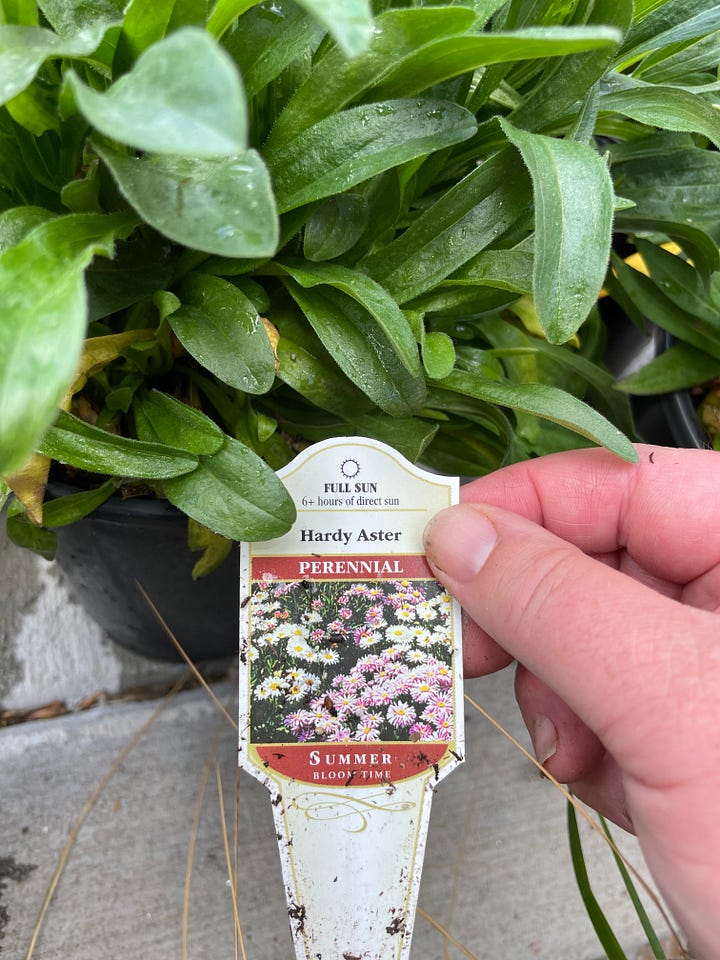
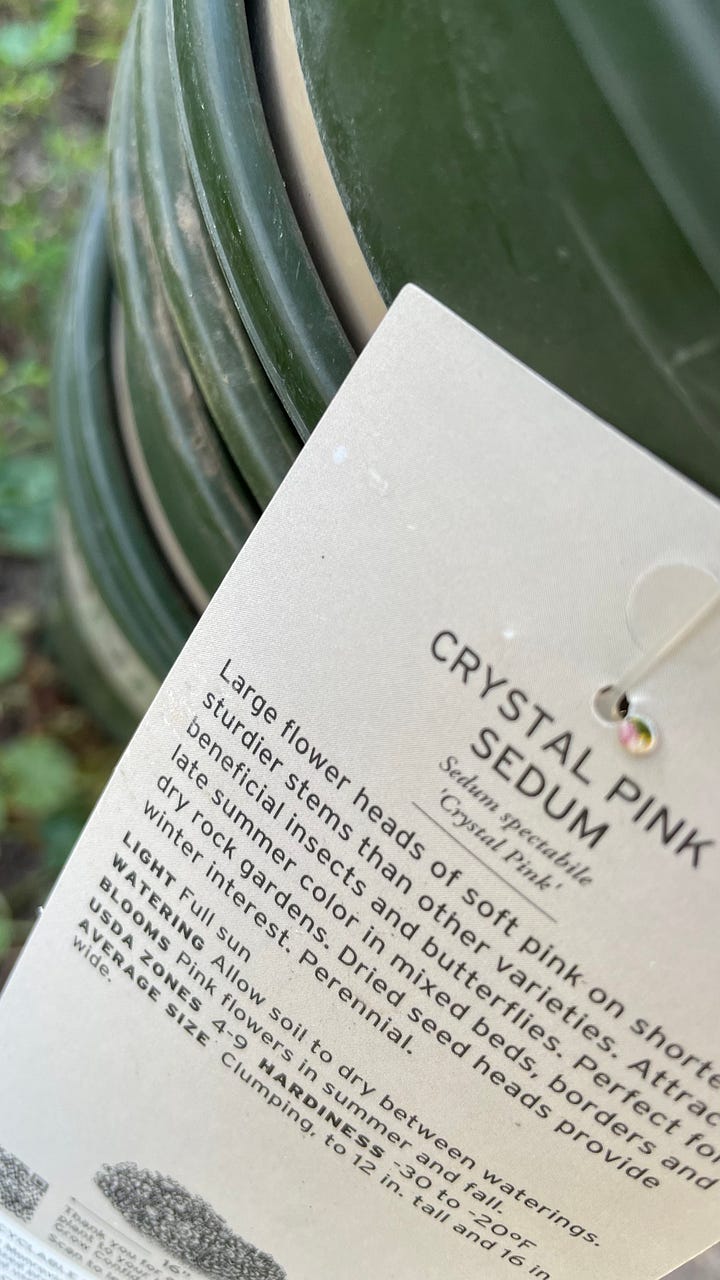
When you look at a plant label, it should have several pieces of information. Two of the most important are the common name – something like Purple Dome New England Aster – and the Latin name Symphyotrichum novae-angliae 'Purple Dome' . The common name is the name we all know, but the Latin name gets specific about the genus, species, and variety of the plant. Remember King Philip Came Over For a Good Supper – Kingdom Phylum Class Order Family Genus Species – yeah, that one!
When you ask for Asters at the garden center, they may be mixed in with Asian Aster varieties or even sold as "hardy mums" in the fall. That's why that Latin name is so important. You want to get the right Aster! Not all North American native Asters are in the genus Symphyotrichum, but if you have to make a quick decision on the fly, that’s the genus to look for.
But why do we need Asters at all?
Asters are some of the last flowers to bloom in the late summer and fall (September to November) providing a nectar-rich meal for native bees before hibernation and for migrating butterflies. They are a critical food source, and scientists have identified at least 115 different insect species who depend on Asters for at least one part of their lifecycle. Remember: without insects – and the right types of insects – we don't have pollination nor do we have birds. They are critical to our ecological health. Every garden should include at least three species – unrolling a late fall buffet before Jack Frost arrives.
Asters are, in general, easy to grow. They thrive in full sun. And they can be fairly drought-tolerant, too. With more than 100 species native to North America, it's pretty easy to find an Aster or three that will work well in your garden.
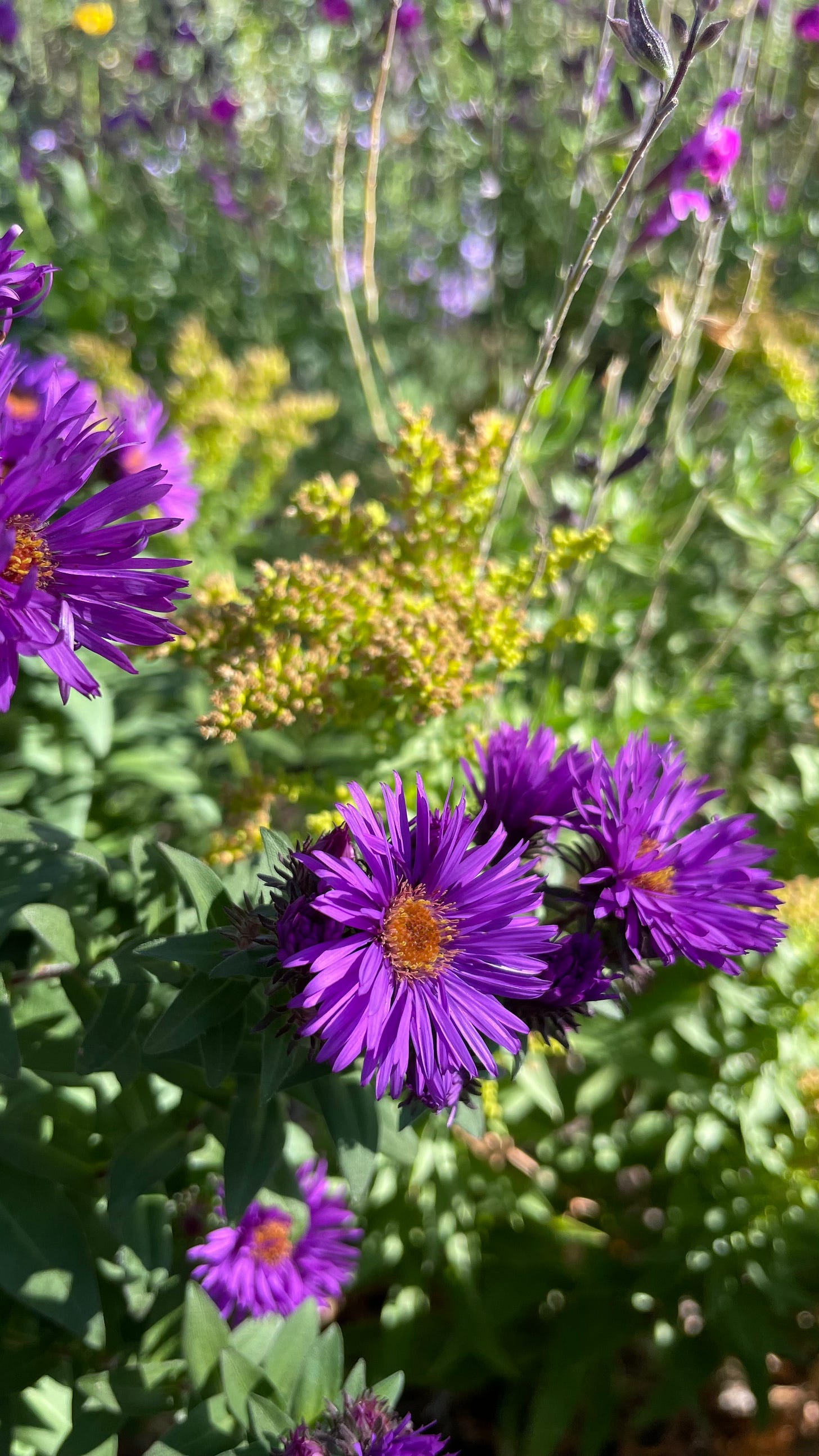
Since they are a keystone plant for North America – meaning Asters as a group of plants are critical to the life cycles of native insects, especially pollinators – they are a keystone of my Wildlife Garden where I currently have two types growing: Purple Dome New England Aster (Symphyotrichum novae-angliae 'Purple Dome') and Professor Kippenberg New York Aster (Symphyotrichum novi-belgii 'Professor Kippenberg'). Both are purple, but astors come in colors from whites to blues to pinks to brilliant purples – often with yellow centers.
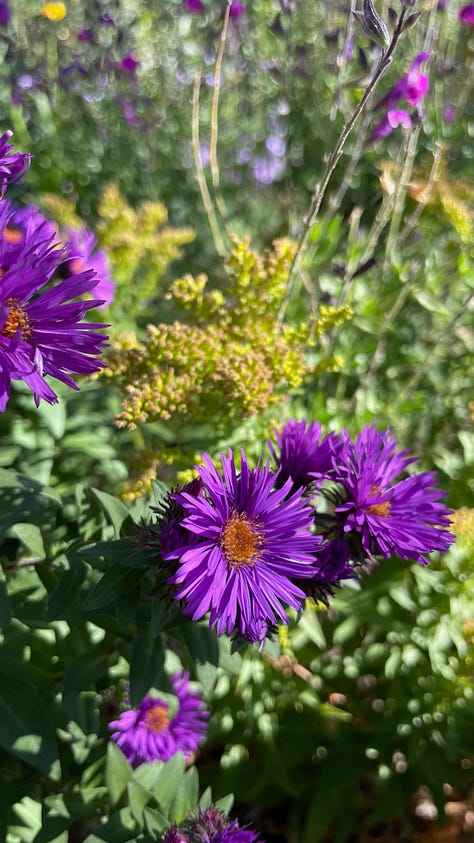


I also have what I suspect is a Douglas Aster (Symphyotrichum subspicatum), but I am not positive. Its lavender flowers have a pretty yellow center. It's very tall and blooms and blooms all summer long making it a bee magnet. I had to transplant it last year, so I am hoping it will come up and flourish this year. Some Asters transplant easily, and others are a little fussier.
There is an Aster for almost any gardening condition: sun, shade, dry, damp, windy, sheltered. And the more types of Asters you have, the more diverse species of wildlife your garden will support. Asters are prone to very few problems, too. The insects they host are the ones we want to keep around, and they are disease-resistant for the most part.
So consider adding some Asters to your garden this year – and do a little legwork to make sure they are actually native North American Asters so they are as helpful as possible for the wildlife around. Afterall, we all like a full belly when we are settling down to hibernate or off on a long migration.
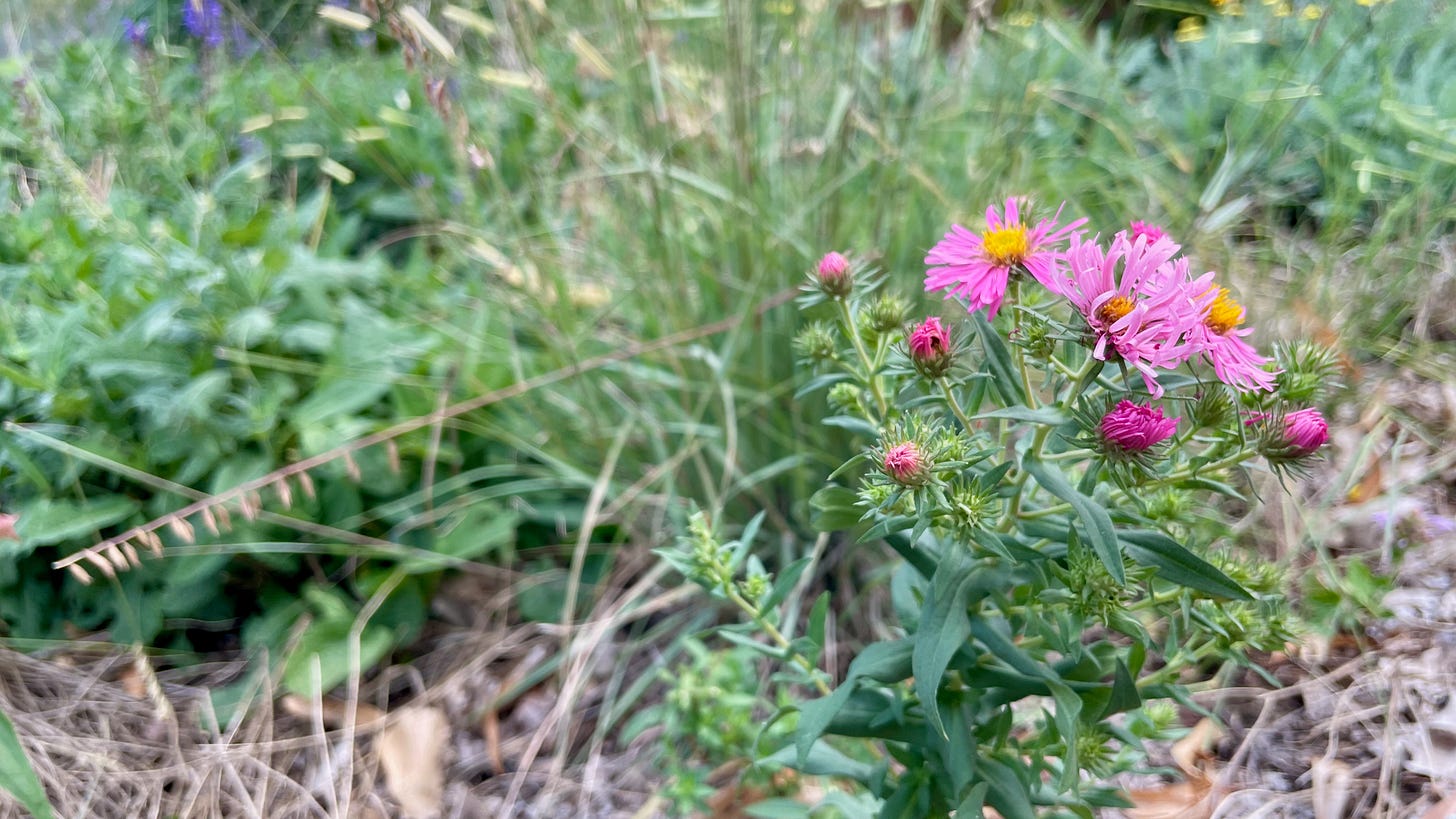
Where to Find Asters
It's always good to find the Asters that work well and are native to your area. Here are some resources to help you:
Wildflower.org: the Lady Bird Johnson Center in Austin, Texas has an incredible database of native North American plants which is easy to search and filter for your part of the continent and growing conditions
Chicago Botanic Gardens: conducted a trial of Asters in "typical" garden conditions in the Midwest and have several plants to recommend.
Missouri Department of Conservation: has a great list of the 24 native species in Missouri.
Dyck Arboretum of the Plains: Scott Vogt has a wonderful list of Asters and other keystone plants for Kansas.
Minnesota Horticultural Society: also has a good list for those of you in the upper Midwest
And here are a few of the most common North American Asters found in garden centers:
Aromatic Aster | Symphyotrichum oblongifolium
Arctic Aster | Eurybia sibirica
Bigelow’s Aster | Machaeranthera bigelovii
Blue Wood Aster | Symphyotrichum cordifolium
Georgia Aster | Symphyotrichum georgianum
New England Aster | Symphyotrichum novae-angliae
Pacific Aster | Symphyotrichum chilense
Smooth Blue Aster | Symphyotrichum laeve
Skyblue Aster | Symphyotrichum oolentangiense
Western Aster | Symphyotrichum ascendens
White Wood Aster | Eurybia divaricata
So, are you growing asters? Let us know in the comments WHERE you grow and WHAT varieties! What works well for you? Sharing varieties can help everyone!
Happy Gardening!
Angela


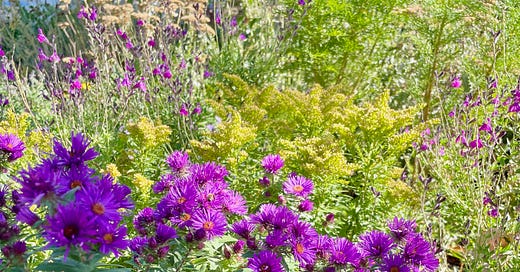



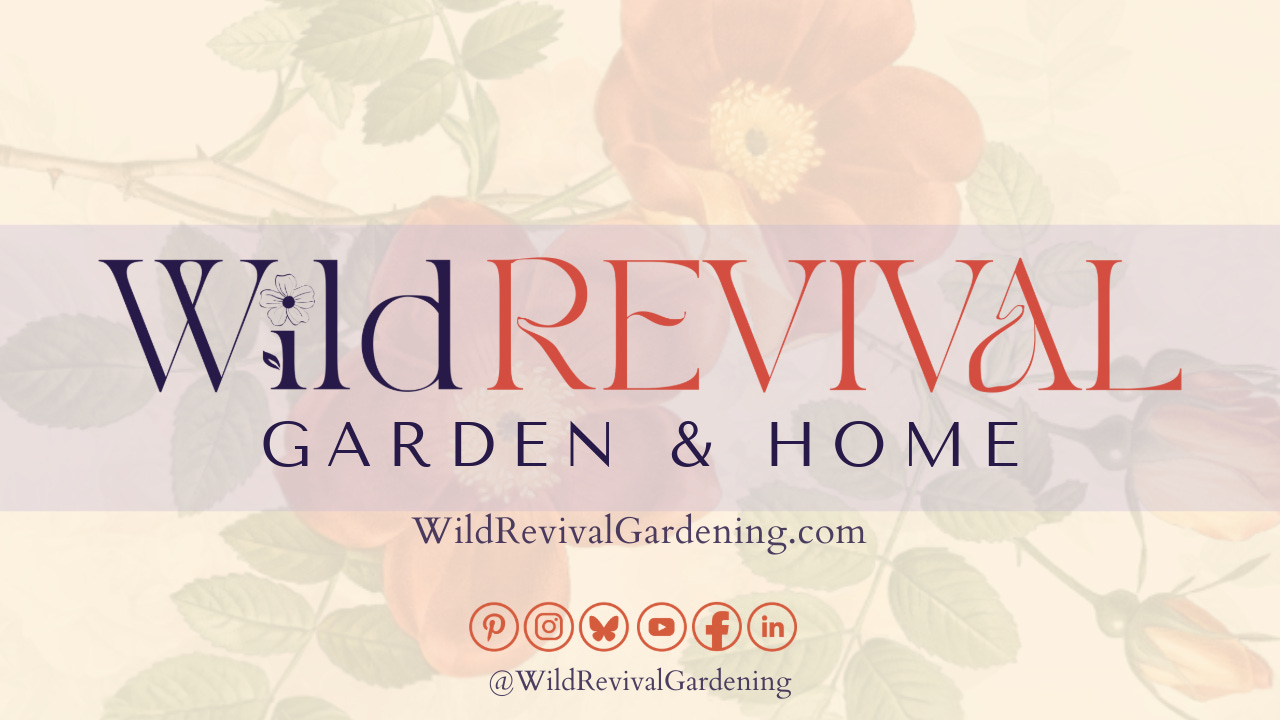
i have several asters in my oak/hickory woods here in KY that I haven't identified to the species level - you are inspiring me to try harder! They make great shade plants in the fall.
I also have the new england aster in my cultivated garden. Thank you for sharing the plant love!
New England asters! Just starting with smooth blue and aromatic asters. 8a SE Piedmont.